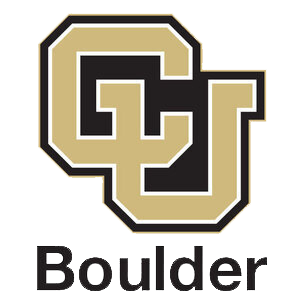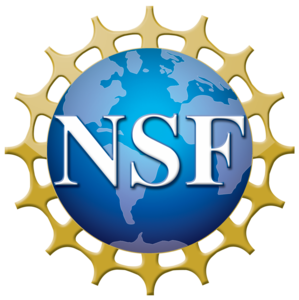All files are in PDF format
John Bollinger (NIST)
Lecture 1: Trapped ion quantum computing
Reviews for basic tools of ion trap quantum computing:
- D. J. Wineland, C. Monroe, W. M. Itano, D. Leibfried, B. E. King, and D. M. Meekhof, J. Res. Nat. Inst. Stand. Tech. 103, 259 (1998)
- M. Sasura and V. Buzek, J. Mod. Opt. 49, 1593 (2002)
- D. Leibfried, R. Blatt, C. Monroe, and D. Wineland, Rev. Mod. Phys. 75, 281 (2003)
- H. Häffner, C. F. Roos, and R. Blatt, Physics Reports 469, 155 (2008)
Example experiments:
- “High Fidelity Universal Gate Set for 9Be+ Ion Qubits”, J. P. Gaebler, T. R. Tan, Y. Lin, Y. Wan, R. Bowler, A. C. Keith, S. Glancy, K. Coakley, E. Knill, D. Leibfried, and D. J. Wineland, Phys. Rev. Lett. 117, 060505 (2016).
- “14-qubit entanglement: creation and coherence”, T. Monz, P. Schindler, J. T. Barreiro, M. Chwalla, D. Nigg, W. A. Coish, M. Harlander, W. Hänsel, M. Hennrich, R. Blatt, Phys. Rev. Lett. 106, 130506 (2011).
- “Demonstration of a Small Programmable Quantum Computer with Atomic Qubits,” S. Debnath, N. M. Linke, C. Figgatt, K. A. Landsman, K. Wright, and C. Monroe, Nature 536, 63 (2016).
Lecture 2: Trapped ion quantum simulation
Review
- R. Blatt and C.F. Roos, Nature Physics 8, 277 (2012).
Example experiment, linear rf trap:
- “Observation of a Discrete Time Crystal,” J. Zhang, P.W. Hess, A. Kyprianidis, P. Becker, Lee, J. Smith, G. Pagano, I.-D. Potirniche, A.C. Potter, A. Vishwanath, N.Y. Yao, C. Monroe, Nature 543, 217 (2017).
Example experiment, Penning trap:
- “Quantum spin dynamics and entanglement generation with hundreds of trapped ions,” J. G. Bohnet, B. C. Sawyer, J. W. Britton, M. L. Wall, A. M. Rey, M. Foss-Feig, J. J. Bollinger , Science 352, 1297 (2016).
- “Measuring out-of-time-order correlations and multiple quantum spectra in a trapped ion quantum magnet,” M. Gärttner, J. G. Bohnet, A. Safavi-Naini, M. L. Wall, J. J. Bollinger, A. M. Rey, Nat. Phys., 13, 781 (2016).
Lecture 3: Trapped ion quantum sensing
Al+ quantum logic clock:
- “Frequency ratio of Al+ and Hg+ single-ion optical clocks; Metrology at the 17th decimal place,” T. Rosenband, D. B. Hume, A. Brusch, L. Lorini, P. O. Schmidt, T. M. Fortier, J. E. Stalnaker, S. A. Diddams, N. R. Newbury, W. C. Swann, W. H. Oskay, W. M. Itano, D. J. Wineland, and J. C. Bergquist, Science 319, 1808 - 1812 (2008).
- C. Chou, D.B. Hume, M.J. Thorpe, D.J. Wineland, and T. Rosenband, “Quantum coherence between two atoms beyond Q=1015,” Phys. Rev. Lett. 106, 160801 (2011).
Weak force sensing:
- “Amplitude sensing below the zero-point fluctuations with a two-dimensional trapped-ion mechanical oscillator”, K.A. Gilmore, J.G. Bohnet, B.C. Sawyer, J.W. Britton, J.J. Bollinger,Phys. Rev. Lett., 118, 263602 (2017).
Tony Cubitt (UCL)
Recommended reading
The Arora-Barak book gives an excellent, modern treatment of the theory of computation and complexity, going far beyond what’s covered in this short course. The proof of Kitaev’s theorem in the course closely follows the original from the Kitaev-Schen-Vyalyi book. The other references in this list are review papers on Hamiltonian complexity, which may also be of interest.
- Arora and Barak, “Complexity Theory: A Modern Approach, Cambridge University Press
- Kitaev, A., Shen, A., and Vyalyi M. “Classical and Quantum Computation”, American Mathematical Society
- Aharonov, D. and Naveh, T. “Quantum NP - a Survey”
- Gharibian, S., Huang, Y. and Landau, Z. “Hamiltonian Complexity”
The following is a selective and incomplete list of links to the arXiv versions of papers that proved key results in Hamiltonian Complexity and Computability theory post-Kitaev.
QMA-completeness with stronger locality conditions, and related results
Proves QMA-completeness of the k-local Hamiltonian problem for k=3k=3.
Proves QMA-completeness of the k-local Hamiltonian problem for k=2k=2. Introduces the perturbation gadget technique.
Proves QMA-completeness of the k-local Hamiltonian problem for nearest-neighbour interactions (k=2k=2) between qubits on a 2D square lattice. (Interactions are not translationally-invariant). Developes stronger perturbation gadget techniques.
- D. Aharonov, D. Gottesman, S. Irani and Julia Kempe, “The power of quantum systems on a line” (2007)
Proves QMA-completeness of the k-local Hamiltonian problem for nearest-neighbour interactions (k=2k=2) bewteen quddits on a line, for d=13d=13. (Interactions are not translationally-invariant.) Later improved to d=8d=8 by Nagaj et al.
Proves QMAEXP-completeness of the local Hamiltonian problem for translationally-invariant, nearest-neighbour interactions (k=2k=2) between quddits on a line, with a fixed Hamiltonian and d≈106d≈106. (The only remaining parameter in the problem is the length of the chain!)
Proves the Gottesman-Irani result for d=42d=42.
QMA-completeness with restricted types of interaction, and related results
Proves QMA-completeness of the 2-local Hamiltonian problem for qubit Hamiltonians containing only XZ, X and Z interactions (amongst other similar results).
Proves a complete complexity classification for the k-local Hamiltonian problem with 2-qubit interactions, according to the type of interactions allowed. (A quantum analogue of Schaeffer’s dichotomy theorem for boolean constraint satisfaction problems.)
Tightens the Cubitt-Montanaro classification by proving one of the four classes in the classification is equal to stoqMA (a highly non-trivial improvement!), amongst other results.
Undecidability in physics
Shows that questions about the dynamics of a particle bouncing around a 3D box with linear and parabolic reflectors is undecidable.
Contains all the technical details and proofs for the above result, and more.
- TC, D. Perez-Garcia and M. Wolf, “Undecidability of the Spectral Gap (full version)” and (short version)” (2015)
Proves undecidability of the spectral gap problem for translationally-invariant, nearest-neighbour interactions between quddits on a 2D square lattice in the thermodynamic limit, with d≈10100d≈10100 (or maybe a bit smaller). Makes key use of ideas from the Gottesman-Irani result, amongst (many) other ingredients.
Daniel Gottesman (Perimeter)
arXiv:0904.2557 [quant-ph] covers a lot of the materials in the lectures
Emanuel Knill (NIST)
Lectures 1 & 2: States in context
- H. Barnum et al., A Subsystem-Independent Generalization of Entanglement, Phys. Rev. Lett. 92 107902 (2004)
- M. Tichy et al., Essential Entanglement for Atomic and Molecular Physics, J. Physics B 44 192001 (2011)
- E. Witten, Notes on some entanglement properties of QFT, arXiv:1803.04993
Lecture 3: Statistics in context
- T. Dorigo, Extraordinary claims: the 0.000029% solution, EPJ Web of Conferences 95, 02003 (2015)
- Examples from the literature
-
Notes on statistical concepts by Manny (2015). Available by request from Manny.
Cindy Regal (JILA)
-
A.M. Kaufman, M.C. Tichy, F. Mintert, A.M. Rey, C.A. Regal, “The Hong-Ou-Mandel effect with atoms” Advances In Atomic, Molecular, and Optical Physics 67, 377 (2018).
-
Y. Wang, A. Kumar, T. Y. Wu, David S. Weiss, “Single-qubit gates based on targeted phase shifts in a 3D neutral atom array”, Science 352, 1562 (2016).
-
M Saffman, “Quantum computing with atomic qubits and Rydberg interactions: progress and challenges” J. Phys. B: At. Mol. Opt. Phys. 49, 202001 (2016).
-
R. Islam, R. Ma., P. M. Preiss, E. M. Tai, A. Lukin, M. Rispoli, M. Greiner “Measuring entanglement entropy in a quantum many-body system”, Nature 528, 758 (2015).
Renato Renner (ETH)
Brian Swingle (University of Maryland)
For background on AdS/CFT, I recommend John McGreevy’s notes and Mark Van Raamsdonk’s notes. See also this review of the RT formula.
Barbara Terhal (Delft University of Technology)
- B.M. Terhal, Quantum Error Correction for Quantum Memories, https://journals.aps.org/rmp/abstract/10.1103/RevModPhys.87.307 and https://arxiv.org/abs/1302.3428
- E. Campbell, B.M. Terhal, C.Vuillot, Roads towards fault-tolerant universal quantum computation, https://www.ncbi.nlm.nih.gov/pubmed/28905902 and https://arxiv.org/abs/1612.07330
- A. Fowler, M. Mariantoni, J.M. Martinis, A.Cleland, Surface codes: Towards practical large-scale quantum computation, https://journals.aps.org/pra/abstract/10.1103/PhysRevA.86.032324 and https://arxiv.org/abs/1208.0928
- V. Albert et al., Performance and Structure of Bosonic Codes, https://journals.aps.org/pra/abstract/10.1103/PhysRevA.97.032346 and https://arxiv.org/abs/1708.05010
- QEC Boulder Exercise Answers
Frank Verstraete (Vienna)
- symmetry breaking:
- “Symmetry breaking and the geometry of reduced density matrices”, http://iopscience.iop.org/article/10.1088/1367-2630/18/11/113033/pdf
- general MPS framework:
- “Matrix product states, projected entangled pair state and variational renormalization group methods for quantum spin systems”, https://arxiv.org/pdf/0907.2796
- MPS manifold
- “Time-dependent variational principle for quantum lattices”, https://arxiv.org/pdf/1103.0936
- “Tangent space methods for matrix product states”, https://pdfs.semanticscholar.org/6aaa/f66b776d4edecaf8500b6ce59e17c364ce71.pdf
- “Geometry of matrix product states: Metric, parallel transport, and curvature”, https://arxiv.org/pdf/1210.7710
- Fermionic MPS:
- Fermionic matrix product states and one-dimensional topological phases, https://arxiv.org/pdf/1610.07849
- symmetries and the fundamental theorem of MPS
- “String order and symmetries in quantum spin lattices”, https://arxiv.org/pdf/0802.0447
- “Classifying quantum phases using matrix product states and projected entangled pair states”, https://arxiv.org/pdf/1010.3732
- topological order and PEPS
- “PEPS as ground states: degeneracy and topology”, https://arxiv.org/pdf/1001.3807
- “Anyons and matrix product operator algebras”, https://arxiv.org/pdf/1511.08090

